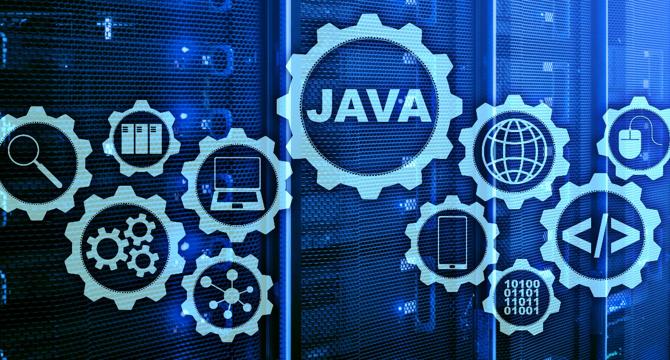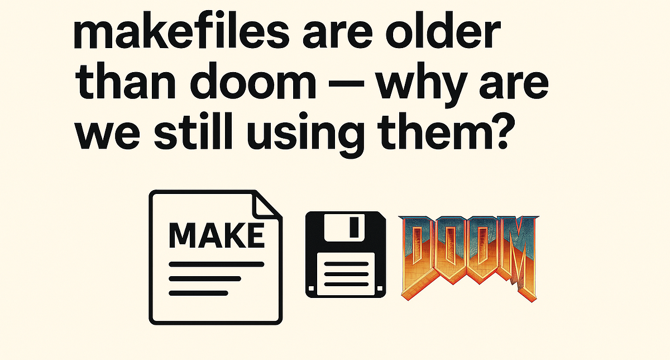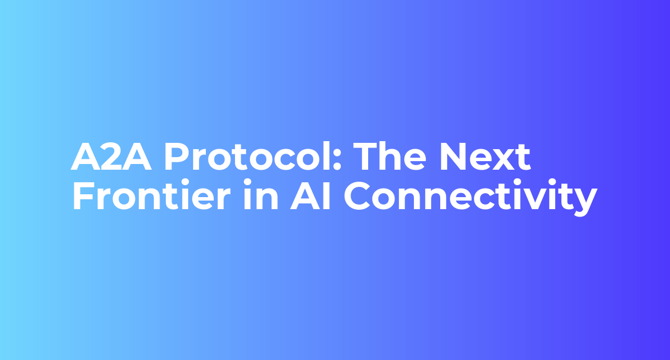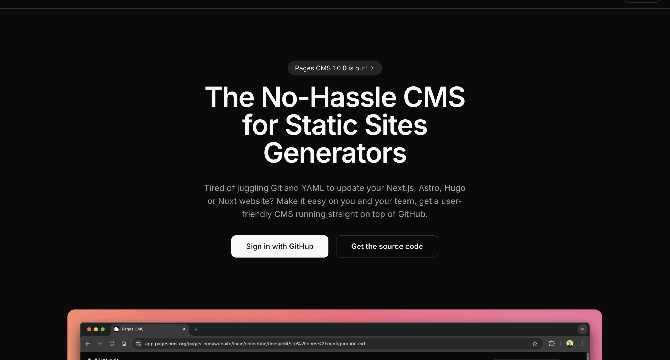Software News
Medium
252

“Optimizing Cloud Web Servers: Why Linux Is the Backbone of DevOps in 2025”
- LIT, or Linux Infrastructure Tools, are essential software used by DevOps engineers for efficient infrastructure management.
- Core tasks of a DevOps engineer include setting up build and release pipelines, automating deployments, managing security, and optimizing cloud infrastructure.
- Linux is crucial in DevOps, encompassing mastery of Linux commands, scripting, automation tools like Terraform and Ansible, and containerization with Docker & Kubernetes.
- The article emphasizes the importance of Linux in the backbone of DevOps in 2025 for seamless software delivery, infrastructure management, and application optimization.
Read Full Article
15 Likes
Hackernoon
150

Image Credit: Hackernoon
Test Smarter, Not Harder: How Purpose-Built Test Management Tools Outperform Spreadsheets
- Spreadsheets have a long history, but modern test management tools outperform them for Quality Assurance (QA) teams.
- Using spreadsheets for tracking and managing testing processes can lead to complexity and inefficiency as features are added and release cycles shorten.
- Limitations of spreadsheets include difficulty in managing and maintaining data, potential for team members to work on outdated versions, and quality issues in final products.
- Modern test management tools offer advantages like centralized systems, structured data organization, and integration with other tools for efficiency.
- Switching to test management platforms can enhance QA team effectiveness, though determining ROI may not be straightforward.
- AI-enabled features in test management tools can improve processes by aiding bug report filing, test case scenario writing, and suggesting test cases.
- Implementing dedicated test management solutions is advised, starting small and scaling up to address limitations and enhance workflow efficiency.
- Spreadsheets serve as a reasonable starting point for QA teams, but as products become more complex, the need for purpose-built test management tools becomes evident.
- Investing in the right test management software is essential for evolving with team and product needs, bringing structure, clarity, and automation to software development.
- AI-enabled features present opportunities to streamline workflows and reduce risks of software bugs slipping through during development processes.
Read Full Article
9 Likes
Engadget
406

Google Keep launches text formatting for the web
- Google Keep has introduced rich text formatting options on its web app, which were previously available only for Android users since late 2023.
- Users of Google Keep on the web can now bold, italicize, underline text, and create sections using H1 and H2 buttons, enhancing the text customization experience.
- The formatting options can be accessed by clicking on the underlined A in the editor's left-hand corner, offering a simple yet beneficial update for web users.
- The update is being rolled out to Rapid Release and Scheduled Release domains, including individual Google account holders, Workspace Individual Subscribers, and Google Workspace users.
Read Full Article
24 Likes
Pcgamer
362

Image Credit: Pcgamer
Musk's Colossus data center for Grok is at the centre of an environmental row over air quality in South Memphis
- Elon Musk's Colossus data center for Grok, xAI's alternative to ChatGPT, is facing criticism over its impact on local air quality in South Memphis.
- The supercomputer uses over 30 methane gas turbine stations to meet its power demands, drawing concerns about emissions and the potential effects on the environment.
- Southern Environmental Law Center reported that the turbines were installed without permits and highlighted the lack of transparency in the project's development.
- The increasing energy demands of data centers like Colossus pose challenges for sustainability and environmental impact, as reliance on fossil fuels may not be a long-term solution.
Read Full Article
21 Likes
Discover more
- Programming News
- Web Design
- Devops News
- Open Source News
- Databases
- Cloud News
- Product Management News
- Operating Systems News
- Agile Methodology News
- Computer Engineering
- Startup News
- Cryptocurrency News
- Technology News
- Blockchain News
- Data Science News
- AR News
- Apple News
- Cyber Security News
- Leadership News
- Gaming News
- Automobiles News
Medium
278

The LLM as Your Main Pair Programmer
- Developers are coding differently, not just faster, due to LLM as their primary pair programmer.
- This shift is transforming the developer's role, skillset, and daily workflow, crossing from traditional engineering workflows to a new mode of development.
- In an LLM-native environment, skills like speed, abstraction, and machine collaboration define the craft, with coding being done differently.
- The best engineers in this setup are those who guide the system with clarity, emphasizing the evolution of the craft rather than losing it.
Read Full Article
16 Likes
Fyfluiddynamics
70

Image Credit: Fyfluiddynamics
Dams Fill Reservoirs With Sediment
- Dams naturally fill with sediment over time as rivers carry water and sediment.
- Sediment falls out of suspension in slower-flowing reservoirs, creating colorful strata.
- Long-term dam plans must address the challenge of sediment build-up, which is a complex and costly issue.
- Dealing with sediment accumulation requires careful planning and investment in infrastructure.
Read Full Article
4 Likes
Infoq
371

Image Credit: Infoq
JEP 505 Delivers Fifth Preview of Java's Structured Concurrency with Key API Refinements
- JEP 505, the Structured Concurrency Fifth Preview, has achieved Targeted status in JDK 25, serving to simplify parallel task management for developers, especially with virtual threads.
- The latest preview refines the API introduced in preceding iterations and enables developers to open a scope using static factory methods like StructuredTaskScope.open().
- Structured concurrency focuses on confining subtask lifetimes, implementing reliable cancellation, and enhancing observability through structured thread hierarchies.
- The API revolves around the java.util.concurrent.StructuredTaskScope class, facilitating the management of concurrent subtasks within a specified scope.
- A coding example illustrates the usage pattern, where tasks are forked, executed concurrently, and then joined within the scope, ensuring completion or cancellation before leaving the block.
- A notable improvement in the fifth preview includes factory method usage for scope creation, enhancing readability and accommodating future API evolution without compatibility issues.
- Custom policies can be supplied via factory methods like StructuredTaskScope.open(Joiner) to define specific task completion behaviors.
- The Joiner interface offers flexibility for implementing custom completion policies, ensuring proper handling of subtask operations within the scope.
- Each Joiner instance should be exclusively used within a single StructuredTaskScope and not across different scopes or after closure.
- Developers are encouraged to experiment with the Structured Concurrency Fifth Preview in JDK 25 to provide feedback for further maturing the API.
Read Full Article
22 Likes
Infoq
132

Image Credit: Infoq
Java News Roundup: OpenJDK JEPs, Hibernate Reactive, Infinispan, JHipster, Gatherers4j
- This Java news roundup covers OpenJDK JEPs, Hibernate Reactive, Infinispan, JHipster, and Gatherers4j.
- Two JEPs, JEP 513 and JEP 505, have been targeted for JDK 25, focusing on Flexible Constructor Bodies and Structured Concurrency.
- Three JEPs elevated to Proposed for JDK 25 include Key Derivation Function API, Vector API, and Scoped Values.
- JEP 518 advances to Candidate status, aiming to enhance JDK Flight Recorder stability by sampling Java thread stacks.
- JEP 516, proposing object caching with any garbage collector, moves to Candidate status for improved startup performance.
- For JDK 25, there are nine significant JEPs, including Stable Values, Scoped Values, and Compact Source Files.
- The JDK 25 early-access Build 22 brings fixes and updates to enhance the upcoming release version.
- Updates in JNoSQL 1.1.7 focus on bug fixes and enhancements, offering support for new ValueReader implementations.
- Quarkus 3.22.2 release addresses bug fixes, including improvements in handling Jakarta RESTful Web Services annotations.
- Hibernate Reactive 3.0.0 RC1 delivers JReleaser support, new interfaces, and methods, aligning with Jakarta Persistence standards for improved flexibility.
Read Full Article
7 Likes
Knowridge
375

Image Credit: Knowridge
New quantum sensors bring 4D vision to particle physics experiments
- Quantum sensors, specifically superconducting microwire single-photon detectors (SMSPDs), are being used in particle physics experiments for better particle detection and study.
- These sensors provide improved time and spatial resolution compared to traditional detectors, allowing scientists to track particles in space and time simultaneously.
- SMSPDs are crucial for future particle accelerators to optimize searches for new particles, dark matter, and the origins of space and time.
- The research team, led by Fermilab and Caltech scientists, believes these quantum sensors will be essential for upcoming projects like the Future Circular Collider, pushing the boundaries of our understanding of the universe.
Read Full Article
22 Likes
Medium
173

Image Credit: Medium
We’re Writing Code Faster Than Ever — But Who’s Using It?
- The gap between producing software at a fast pace and its actual adoption is a significant challenge in today's tech landscape.
- Real software consumption involves more than just acquiring licenses or subscriptions; it extends to how effectively and seamlessly software is integrated into human and organizational processes.
- Implications for the market structure include the need for minimal adoption friction, focusing on consumption metrics for success evaluation, and creating pathways for gradual transformation.
- To address the production-consumption gap, organizations are advised to develop evaluation frameworks, prioritize integration capabilities, and enhance organizational adoption competency.
Read Full Article
4 Likes
Medium
168

Image Credit: Medium
Makefiles are older than Doom why are we still using them?
- The use of 'make', an ancient build tool, is questioned in modern software development despite its historical significance and prevalence in numerous projects.
- Make's syntax, characterized by intricate rules and the need for precise indentation, has made it a challenging tool to work with.
- While modern alternatives like CMake exist, they often still rely on 'make' underneath the surface, maintaining its grip on certain development environments.
- Although considered fragile and outdated, 'make' continues to be deeply embedded in various systems, especially in academia and monorepos.
- Usage of 'make' persists due to its ubiquitous presence and simplicity in smaller projects, CLI tools, and legacy codebases.
- Despite its limitations, 'make' remains a reliable choice for quick and efficient build setups without the overhead of complex configurations.
- Modern development tools are aiming to surpass 'make' by offering better syntax, clearer documentation, and improved developer experiences.
- The future of build systems may involve smart, context-aware tools that reduce manual efforts and improve productivity for developers.
- Devs are seeking advancements in build tools that are more declarative, user-friendly, and automated, enhancing the efficiency of the build process.
- While 'make' still has its place in certain scenarios, the evolution of build systems is inevitable, with a focus on creating tools tailored for modern development needs.
- Ultimately, the choice of build tool depends on the specific requirements of each project, aiming to maintain efficient builds and developer sanity.
Read Full Article
10 Likes
Webkul
367

Image Credit: Webkul
A2A Protocol: The Next Frontier in AI Connectivity
- Agent to Agent (A2A) protocol serves as an open standard for secure communication and collaboration among AI agents across different platforms.
- Introduced by Google in April 2025, A2A protocol is gaining attention for its seamless integration of various AI systems.
- It functions as a universal language for AI assistants, enabling knowledge sharing, task coordination, and improved user experience.
- A2A protocol fosters collaboration among diverse AI systems to enhance creativity and efficiency in developing advanced Gen AI solutions.
- It is set to revolutionize the AI development landscape by promoting interconnectedness and dynamism within the ecosystem.
- The A2A Protocol follows an HTTP-based communication model, facilitating interoperable services, consistent communication, and scalability.
- Each agent exposes an 'Agent Card' that details its identity, capabilities, endpoints, and authentication requirements for effective interaction.
- A2A leverages JSON-RPC for message exchange, ensuring simplicity in managing complex agent interactions.
- The protocol uses HTTP as its primary transport layer and includes SSE for real-time updates during task execution.
- A2A architecture comprises components like Agent Card, A2A Server, A2A Client, Task, Message, Part, Artifact, Streaming, and Push Notification.
Read Full Article
22 Likes
Hackernoon
137

Image Credit: Hackernoon
How Enclave Markets is Building a Privacy-First, Fully Encrypted Crypto Exchange
- Phil Wirtjes, CEO of Enclave Global, discusses the journey from health tech to leading a privacy-first crypto exchange.
- Enclave Markets was created to address trading mistakes and improve user experience in the crypto space.
- The architecture of EnclaveX involves a Secure Enclave and Attestors for distributed control, enhancing user protection.
- Transitioning from permissioned to permissionless models, Enclave considers different use cases and audiences for their FEX model.
- Enclave's decentralized custody model utilizes a network of Attestors to secure the exchange code and user wallets.
- Key metrics for Enclave's product-market fit include tracking deposits, active users, open interest, and trading volume.
- Enclave Markets aims to offer custom hedge fund opportunities for users, democratizing access to profitable trading strategies.
- Users can select risk profiles and engage in professional trading strategies on the platform with minimal capital requirements.
- Enclave plans to continue rolling out Alpha Strategies and enhancing user profit opportunities over the next 6-12 months.
- The article shares insights into Enclave's unique approach to privacy, user empowerment, and future expansion in the crypto market.
Read Full Article
8 Likes
Scand
8

Image Credit: Scand
Why Java Is Still a Good Choice for Enterprise Software Development
- Java has been a popular programming language for enterprise software development, with a significant market demand.
- Although Java faced competition from newer technologies post-2015, it continues to be a leading choice for enterprise development.
- Java is widely used in sectors like banking, finance, and the public sector where legacy systems are prominent.
- With a market share of about 35-45%, Java competes with languages like C#, Python, and JavaScript for enterprise development.
- Java's scalability, flexibility, powerful ecosystem, security features, and long-term support make it ideal for large enterprises.
- Java's compatibility with legacy systems, modernization capabilities, and support for cloud-native development contribute to its relevance.
- Comparing Java with other technologies like C#, Python, and Node.js highlights Java's strengths in stability, performance, scalability, and security.
- Java finds applications in various fields like banking, government, SaaS, and healthcare due to its reliability and data security features.
- Java's support for legacy systems, transition to modern architectures, and cloud-native development make it a versatile choice for enterprises.
- Partnering with companies like SCAND for Java enterprise software development services can lead to successful modernization and high-performance solutions.
Read Full Article
Like
CSS-Tricks
106

Image Credit: CSS-Tricks
Using Pages CMS for Static Site Content Management
- Pages CMS is a user-friendly content management system designed for static site generators like Astro and Eleventy.
- It offers easy customization, collaboration features, and customizable fields for different content types.
- Content is stored as flat files in the git repository, simplifying content management without requiring knowledge of Git.
- User authentication can be done via GitHub accounts or email invitations with password-less login URLs.
- Pages CMS has a low barrier to entry as it is free to use.
- It works well with Astro's content collection feature, managing directories of Markdown files effectively.
- The configuration files in Pages CMS allow for defining collections, setting up fields, and managing media like images.
- Users can create and edit content through the Pages CMS online app, simplifying the content creation process.
- Automated deployments can be set up with service providers like Netlify or Vercel for seamless content updates.
- Pages CMS provides flexibility and ease of use for managing static site content efficiently.
Read Full Article
6 Likes
For uninterrupted reading, download the app